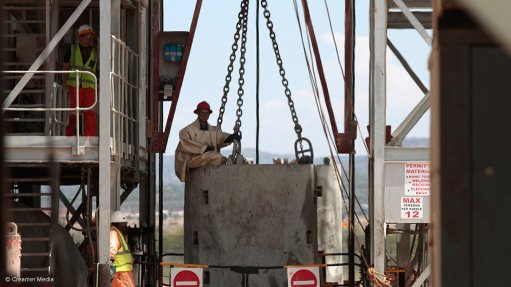
Bakubung platinum mine
Photo by: Duane Daws
JOHANNESBURG (miningweekly.com) – JSE-listed Wesizwe Platinum’s optimisation plan for the Bakubung platinum mine, approved on Wednesday, aimed to improve the business case of the mine, given the current economic and social environment in the mining industry in South Africa.
“We decided to embark on the optimisation plan owing to lower metal prices, increasing cost pressures, changing social climate and working condition requirements, and technical challenges currently facing other mines in the industry,” Wesizwe Platinum COO Paul Smith said at media briefing in Johannesburg, on Thursday.
The optimisation study builds on the bankable feasibility study undertaken by the mine in October 2009.
A key result of the optimisation plan will see the Rustenburg-based operation reduce the time of ramping up to full production by 26 months. “The initial 230 000 t/m production level is now planned for October 2020 as opposed to December 2022, said Smith, and will increase to 250 000 t/m of run-of-mine ore at full capacity.
Other key results of the optimisation plan would see the number of the mine’s employees reduced by 235 people to 3 135 in service during steady-state, as a result of adopting semimechanised operation.
The project is 17% complete to date. The primary focus, which was on shaft sinking, was progressing and the company reported that the main and ventilation shafts had achieved depths of 396 m and 567 m respectively.
The sinking of a third raise-bore shaft was also planned to start next year and would assist in ventilation and logistics.
The optimisation plan would also enable Wesizwe platinum to reduce the capital required for the project by just over 10% to R10.69-billion, down from R12.03-billion.
Meanwhile, Wesizwe on Thursday also announced that it expected to report a basic loss a share for the year ended December 31, 2013, of between 0.52c and 0.58c, compared with basic earnings a share of 0.60c for the previous comparable period.
Further, headline loss a share for the year ended December 31, 2013, was expected to be between 0.63c and 0.69c, compared with headline earnings a share of 0.70c for the previous comparable period.